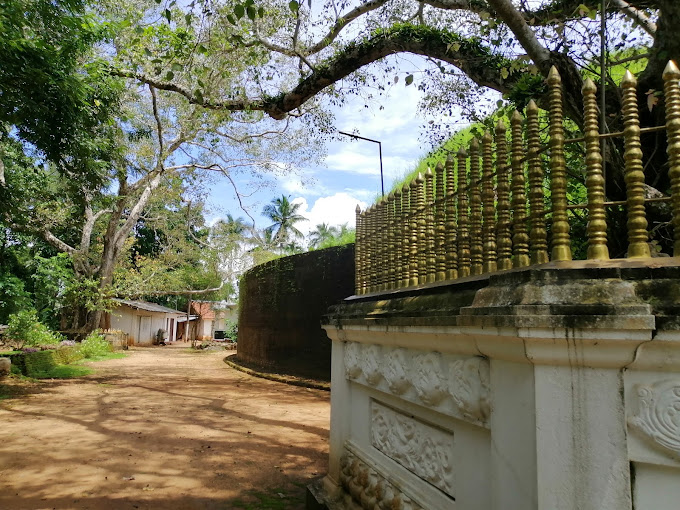- Area: Sri Lanka
- Type: Attractions
- Group: 3rd Century BC Buddhism Vihara
According to the folklore Deliwala Kota Vehera was built by a regional king called Keerthi Tissa in the 3rd century BC. On a request by him, King Devanmpiyatissa (250-210 BC) invited Mihindu Maha Thero and he came to this temple with the relics which were ceremoniously enshrined.
According to Professor Paranavithana, this stupa was built at least in the 1st century BC. Based on the Brami lettering on the bricks and the size of the bricks archeologists believe these bricks belong to the period of King Dutugemunu (161-131 BC). But according to Mahavansa, this was built during the time of King Devanmpiyatissa (250-210 BC).
There is another belief that this was built by King Parakramabahu ( 1153-1186) while he was staying there but left for Polonnaruwa leaving the stupa in an incomplete state.






In 1892, A.C. Bell reported that the stupa’s circumference was 640 feet, and the height was 112 feet, and appears to be filled will earth thinly filled faced with brick. (Bell, 1904). Although treasure hunters have missed this stupa, it has been in a very dilapidated state when it was found. It was also reported that this was built using a thin layer of bricks as the shell and filled with earth inside. According to Prof. Paranavithana, this stupa has been built by shaping a small natural hill and building a brick shell over the hill.
During excavations in 1957, a golden casket of about 3 inches in height was discovered near the Pesa Walalu. This was a perfect replica of the Sanchi Stupa in India. A relic chamber was not present in this stupa but in addition to the golden casket, 173 smaller caskets and 2 gemstone caskets have been discovered in the stupa. Today the stupa is 160 m in circumference.

